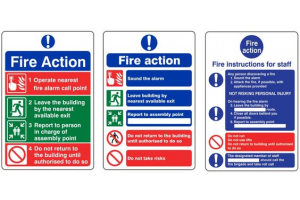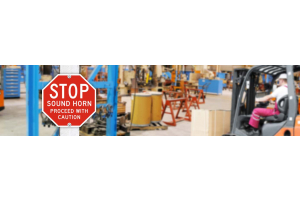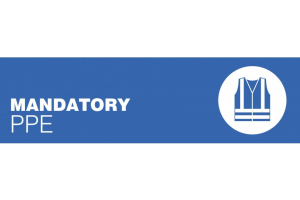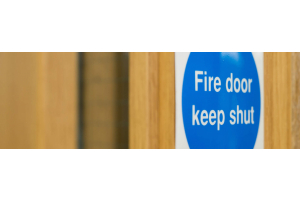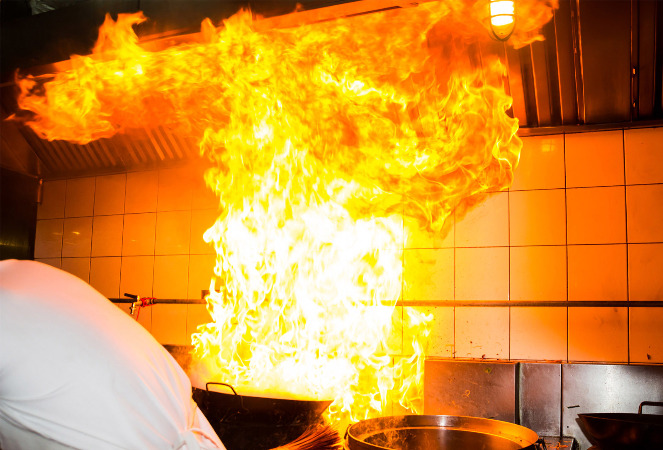
Introduction
This article is aimed at employers in the catering and hospitality industry and gives guidance on ventilation requirements for kitchens. It will help employers assess whether existing ventilation is adequate. It will also be useful for planning the ventilation specification for new or refurbished kitchens. The guidance advises on management, as well as design and performance issues.
While much of the information concerns gas appliances, those with solid fuel appliances, such as charcoal ovens and grills, will also find it useful. Owners of such equipment should be aware that because charcoal ovens cannot be switched off, adequate ventilation is necessary, even when the oven is covered and cooling down overnight. This will prevent a build-up of carbon monoxide that could affect neighbouring properties.
What the law says
The Regulations require that employers provide effective and suitable ventilation in every enclosed workplace. This includes kitchens, which need ventilation to create a safe and comfortable working environment. Catering and cooking can produce significant amounts of fumes and vapours, as well as large amounts of heat. Mechanical extraction, via a canopy hood installed over the cooking appliances can remove these fumes and vapour and discharge them to a safe location
Gas Safety (Installation and Use) Regulations 1998 These Regulations impose additional requirements and apply to gas appliances found in most catering premises. Some gas appliances will be a type (known as type B) that require a flue to comply with the Regulations. Where extraction serves that purpose, it is considered a flue and requires an appropriate interlocking system connecting the airflow to the gas supply.
Gas Safety In Catering
In considering general ventilation requirements for kitchens it is important to consider the impact of such ventilation on gas appliances covered by these regulations. It is particularly important to ensure there is adequate make-up air for gas-fired appliances, the lack of which can lead to incomplete combustion and an accumulation of combustion products, such as carbon monoxide. Work on gas appliances should be carried out by a Gas Safe engineer. Effective kitchen ventilation systems The objectives of an effective kitchen ventilation system are to:
- remove cooking fumes at source, ie at the appliance;
- remove excess hot air and bring in cool, clean air, so the working environment is comfortable.
- Inadequate ventilation can cause stress, contributing to unsafe systems of work and high staff turnover;
- make sure that the air movement in the kitchen does not cause discomfort, eg from strong draughts;
- provide enough air for complete combustion at fired appliances, and prevent the risk of carbon monoxide accumulating;
- be easy to clean, avoiding build-up of fat residues and blocked air inlets, which lead to loss of efficiency and increased risk of fire;
- be quiet and vibration free.
The ventilation system design needs to take account of the:
- cooking load;
- amount of cooking equipment used;
- layout and shape of the kitchen;
- number of staff;
- need for easy cleaning and maintenance.
The following guidance outlines effective design features. Assess existing and planned systems to make sure they meet these ventilation objectives.
Canopies Design
The canopy hood needs to be designed and operated to ensure effective removal of cooking fumes. It needs to be a suitable size and have enough extraction to minimise fume spillage into the kitchen. There should be a canopy hood for every appliance and other sources generating fumes and heat. The canopy hood should be as close as possible to the source, taking into account the work requirements. The airflow into the canopy should be uniform and constant, and meet the appropriate design flow for the appliances and room ventilation rate. Canopies and ductwork need to be constructed from non-combustible material and made so they discourage accumulations of dirt or grease, and condensation.
There should be suitable access to the ductwork, to allow regular cleaning to prevent accumulation of fat etc. Grease filters need to be readily removable for cleaning/replacement. Performance The extraction rate is best calculated from the information supplied with the appliances. It should also take account of air change rates required for kitchens. Where canopies are not used, eg where extraction is through ventilated ceilings, consult a competent heating and ventilation engineer to calculate the appropriate ventilation rates. The design should avoid draughts where the kitchen is subdivided (eg wash-ups, vegetable preparations). Maintenance Mechanical ventilation systems should be maintained in efficient working order in accordance with the manufacturer’s/installer’s instructions.
Replacement Air
The ventilation system design should take into account the need to replace extracted air. Mechanical and/or natural means can provide make-up air, but it should be fresh and unadulterated from the outside. In smaller kitchens, there may be sufficient replacement air drawn in naturally via ventilation grilles in walls, doors or windows. Where air is drawn in naturally, some means of control over pest entry is usually needed. A fine mesh grille will restrict the ventilation, and a larger grille area can compensate. However, for larger installations, a mechanical system using a fan and filter is more suitable.
The ‘clean air’ should not be taken from ‘dirty’ areas, eg waste storage, smoking areas etc. The make-up air should not impair the performance of flues serving gas appliances.
Cooling Air
Balancing incoming cool air and extracted hot air effectively should help prevent the kitchen becoming too hot. For mechanical make-up air systems, direct the cooler air towards hot work positions. Otherwise, consider air conditioning or fixed fans that do not affect the efficiency of fume extraction. Local freestanding fans may cause air currents or turbulence, affecting the efficiency of fume extraction. They are not normally an effective way to provide makeup air. They may also introduce other hazards, such as tripping and electric shock hazards from the trailing cable.Discharge High-level discharge of extracted air is often needed to prevent nuisance to neighbouring properties.
Avoid rain caps and other devices that impede upward vertical velocity. Never use devices that direct the discharge downward as they encourage down draught and re-entry of fumes into the building. Fume discharge should also be away from wet cooling towers.
New Ventilation Systems
The caterer will need to provide detailed information for the competent advisor, designer and installer, including the following information:
- maximum demands likely to be placed on the ventilation (eg to cope with peaks of activity);
- amount and type of kitchen equipment;
- the menu;
- number of meals; and
- number of staff.
Advisors, suppliers and installers should be competent and have knowledge of industry practice and relevant health and safety guidance and legislation. The caterer should consult with the safety or employee representatives in good time about any significant changes. The caterer should keep records of design criteria, commissioning performance, maintenance requirements, and of tests and inspections. These enable maintenance, modification, and testing against the original specification. The building owner or manager The owner or manager of the building may provide facilities such as equipment and ventilation. In these cases, they should follow the advice here. Providing adequate ventilation will require the owner to obtain information on probable kitchen usage from the caterer.
The Designer/Design Team
The ‘design team’ means the various interested parties (owner, caterer, designer, supplier and installer). They need to discuss their respective information needs and what information each should supply. The ventilation design engineer will need to take into account:
- The presence of gas appliances subject to the Gas Safety (Installation and Use) Regulations 1998. In particular, the requirement for an adequate supply of air for combustion and flueing arrangements.
- kitchen usage information from the caterer;
- equipment information from the caterer or supplier, eg cleaning requirements, the amount of air required for complete combustion, and the performance of the existing installation;
- the requirements or specifications for the air cleaning system, eg for grease removal at the canopy and also before final discharge outside;
- the limitations of the building, eg the available room may influence the sites and routes for air inlets or discharges;
- food hygiene requirements, eg identify a suitable source for clean make-up air; prevent pest entry;
- avoid grease accumulation and ensure easy cleaning of the system;
- heat control.
Assess the need for interlocking the ventilation power supply to the gas supply and take appropriate action. This decision should be based on a competent persons’ assessment of the risks associated with the use of the gas appliance. Further guidance for designers is available from industry produced technical guidance, for example guidance from The Chartered Institution of Building Services Engineers (CIBSE) and The Heating and Ventilation Contractors’ Association (HVCA)
The Equipment Installer
The equipment should be installed by a competent person. The equipment installer needs to know the design performance and capacity of the ventilation system, so they can ensure adequate ventilation. For existing installations where data is absent or unavailable, the installer should recommission the system of extraction and make-up air, and produce a report detailing its performance. A competent heating and ventilation specialist can provide this information. Gas-fired appliances should be installed by a Gas Safe engineer. Before installing a gas-fired appliance, the gas installer needs to know the specific air inlet requirements.
Manufacturers of new catering appliances have to provide this under the Gas Appliances Directive. The gas installer can then check that these requirements are met by the ventilation system provided, taking into account other existing appliances. Information on the ventilation requirements of the existing appliances could be obtained from the caterer’s records or from the manufacturers.
